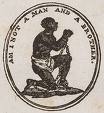Case Background
On June 7, 1892, Homer Plessy arrived at the Press Stop Depot in New Orleans to challenge Jim Crow. Plessy was part of the Comite des Citoyens (Committee of Citizens), a group of eighteen New Orleans men whose object was to “obtain a United States Supreme Court ruling preventing states from abolishing the suffrage and equal-access gains of the Reconstruction period” (1). With Plessy, they were challenging act 111 of the 1890 Louisiana legislature, which, simply put, required that black and white passengers ride in separate cars; those cars were, however, to provide equal accommodations. The thirty-year old Plessy was younger and certainly not as prosperous as the other distinguished committee members, which included a former Louisiana lieutenant governor. Plessy's one attribute, according to author Mark Medley, was “being white enough to gain access to the train and black enough to be arrested for doing so” (2). This was not an impetuous act, but planned civil disobedience.
The committee received the cooperation of the railroad Plessy was set to infiltrate (many railroads were set against segregation on account of the cost it would require to separate the races) and they hired a detective to make the arrest. The action was set to coincide with the National Republican Convention in Minnesota to convince them to focus on civil liberties in the South. The test was to see if the Separate Car Act applied to cars with destinations only within Louisiana. No one stopped Plessy as he bought a first class ticket, traveled past the posted signs of the Separate Car Act and the cars marked “colored only.” Plessy took a seat in first class; he appeared to be a well-dressed white man. The conductor, when collecting tickets, inquired if Plessy was a colored man; Plessy said yes, he was a black man, and an American citizen. Plessy refused to move when requested to do so. The train stopped and the conductor walked back to the station depot and retrieved the waiting detective, who then boarded the train and arrested Plessy after a few more warnings to move. At the Fifth precinct station, Plessy was booked and held until bail was posted by the Committee.
The Daily Crescent reported: “In the wrong coach, a snuff-colored descendent of Ham kicks against the “Jim Crow” law, and takes the jail end of it rather than comply with its distinctive Provisions." Perhaps in another year the arrest and challenge would have generated more national attention, but the late nineteenth century was tumultuous already. In 1892, the press and nation had a number of other things to be concerned about: militant strikes dotted the country as class warfare raged; blacks were being killed at the rate of 2 or 3 a week, many by lynching; populism was stirring the countryside as political conventions were gearing up for an election; and just the year before, in New Orleans, twelve Italian immigrants were massacre. In New Orleans, the Times-Democrat was calling for total segregation, and other papers were encouraging vigilantism. Black crimes were highly publicized and inter-marriages were disparaged (3). The turbulent atmosphere no doubt hampered the members of the committee, as they failed to galvanize the black community. Few blacks in New Orleans “seemed to care about the outcome,” and when the U.S. Supreme Court handed down a near unanimous decision legalizing segregation on May 18, 1896, it “caused scarcely a ripple” (4).
1. Keith Weldon Medley, We as Freemen: Plessy v. Ferguson (Gretna, La.: Pelican Publishing Company, 2003), 14 .
2. Ibid., 17.
3. Ibid., 140-149.
4. Raphael Cassimore, Jr., "Plessy: Like as In Plessy v. Ferguson," Crisis (February/March, 196); 17.

